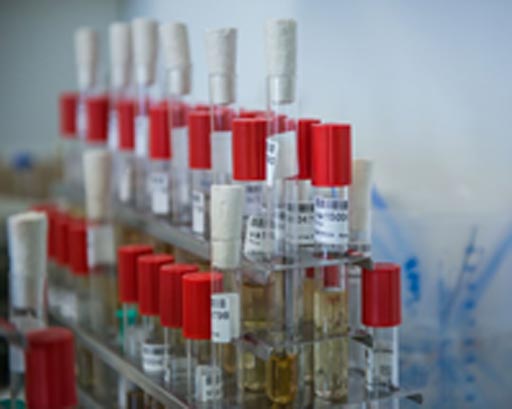Rapid Test Specifically Detects Mobile Colistin Resistance in Isolates
By LabMedica International staff writers
Posted on 22 Feb 2017
Scientists have evaluated a commercially available LAMP-based assay for rapid detection of the plasmid-encoded mobile colistin resistance gene mcr-1 in Enterobacteriaceae isolates. With further development and evaluation, it can likely also be used in hospitals and for livestock.Posted on 22 Feb 2017
Scientists from the German Center for Infection Research (DZIF) and the Justus Liebig University (JLU) Giessen (also Giessen University) evaluated the test, which detects the mcr-1 within 20 minutes.

Image: Enrichment of bacterial cultures (Photo courtesy of DZIF and JLU).
Colistin is used as a “last-resort antibiotic” for multidrug-resistant pathogens, especially in hospitals. However, some gut bacteria have become insensitive to colistin due to the mobile colistin resistance gene mcr-1. In early 2016, bacteria carrying mcr-1 were detected in Germany for the first time and there is growing concern that it may develop into a superbug against which even emergency antibiotics are no longer effective. Risk of further spread of this colisitin resistance is high because it takes place through plasmids, which are transferred between different types of bacteria relatively easily.
“Confirming the mobile mcr-1 resistance gene as rapidly as possible is important so as to prevent its further spread,” emphasized Linda Falgenhauer, DZIF scientist at Giessen University and a co-first-author of this study. She, with colleagues from Giessen University and from the research association RESET, tested a rapid genotypic resistance test for colistin that is already commercially available. “This is the only way with which mobile resistance can be differentiated from common resistance, because phenotypically they are the same,” said co-first-author Can Imirzalioglu, DZIF scientist at Giessen University.
For the evaluation of this test, AmplexBiosystems GmbH provided the testing kits free of charge. The scientists tested 104 bacterial isolates from animals, humans, and the environment: the results were compared to those from complete genome sequencing or PCR, and demonstrated 100% sensitivity and specificity. So the test could clearly differentiate between common colistin resistance and mobile resistance located on plasmids. However, applying the test directly to clinical samples has not yet been evaluated, it only been applied to bacterial cultures.
“The test results become available in only twenty minutes,” said co-author Judith Schmiedel, from the Giessen team, “With the conventional procedure, it takes several hours to get results. Additionally, the system is very uncomplicated, so it should be developed further for future use in hospitals as well as for livestock farming and food production.” With an “interdisciplinary collaboration, we are following the One Health approach which takes into account the systemic connections between humans, animals, the environment, and health in order to fight antibiotic resistance,” said Prof. Trinad Chakraborty, of JLU Giessen and coordinator of the DZIF partner-site Giessen-Marburg-Langen.
The study, by Imirzalioglu C et al, was published online ahead of print January 30, 2017, in the journal Antimicrobial Agents and Chemotherapy.














